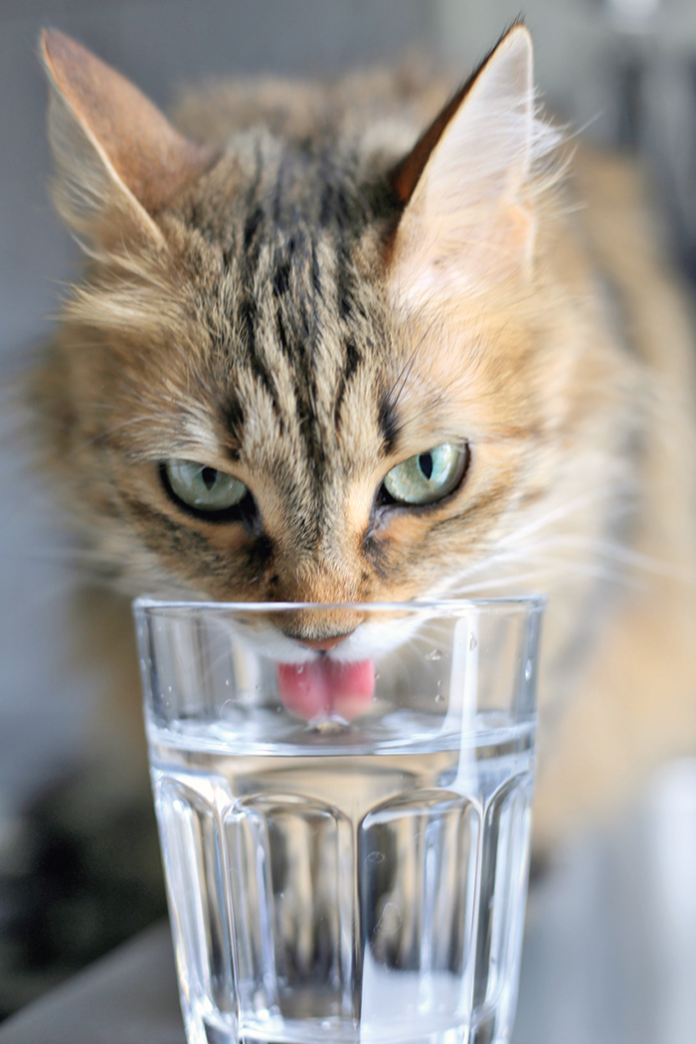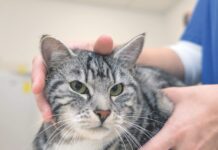Q. I’m a longtime subscriber to CatWatch and read with great interest the article on inflammatory bowel disease in the February issue. We have a sweet cat named Billy that has developed some serious constipation problems that come and go. It’s heartbreaking to watch Billy try to use his litterbox straining so hard without results. He is under veterinary care and being treated with Miralax and lactulose, which seems to work sometimes, but not always. Do you have any other suggestions regarding what else can be done to treat this?
A. Thank you for getting in touch, and I am very sorry to hear that Billy is experiencing this common feline problem. Constipation, characterized by infrequent bowel movements and stools that are difficult to pass, can be challenging to treat in cats, as you know. There are some basic principles of therapy, though, that may be helpful to review.
Cats should defecate at least once daily with formed stools that are deep brownish in color and not too mushy or hard to the touch. Management strategies for cats that develop constipation are generally first focused upon assuring that there is no behavioral component contributing to constipation.
Cats that develop aversions to specific litterboxes or litter, that are denied access to their litterbox by where it is placed or by territorial conflicts with other cats, or that may become hesitant to defecate due to discomfort caused by arthritis or other health problems may become predisposed to constipation. As stool remains in the colon, water is absorbed out of it, so if a cat is hesitant to defecate for behavioral or other medical reasons, the stool becomes drier, often making it more difficult to pass. Any behavioral or medical issues that may make a cat hesitant to defecate should be addressed first, before attempting other strategies.
Assuring adequate water intake is important, and cats can be prompted to increase their water intake by making sure that plenty of fresh water is always available, by feeding wet food or adding water to dry food, and by providing cat-friendly water fountains, in some cases. Constipated cats that are clinically dehydrated may benefit from rehydration by either intravenous or subcutaneous fluid therapy.
If rehydration and maintenance of normal hydration is not successful, it may become necessary to remove impacted feces from the colon via either enemas, rectal suppositories, or manual removal (the latter usually under sedation or anesthesia). Owners should seek veterinary guidance prior to instituting any of these interventions.
Increasing dietary fiber by adding psyllium, unspiced pureed pumpkin, or beet pulp to the food can be helpful in increasing fecal water content and in promoting intestinal motility.
The addition of cathartics, which increase colonic motility by either drawing water into the gastrointestinal tract or by stimulating its lining, and laxatives, which work by lubricating the stool and increasing its bulk and water content, are often the next steps in managing constipated cats.
If cathartics and laxatives don’t work, drugs that directly increase the motility of the colon are reasonable next steps. In many cases, several of these strategies may be used simultaneously, and it is important to work closely with your veterinarian to individualize therapy to your cat’s specific needs.
These therapies should begin as early as possible, as chronic constipation can lead to situations in which the colon becomes permanently dilated and unable to contract normally (called megacolon), which results in a complete inability to pass stools (obstipation). In extreme cases of megacolon, surgical removal of damaged portions of the colon may become the only treatment option.
I hope that this is helpful, and please continue to work closely with your veterinarian to assure the best management plan for Billy.
Best of luck, and please send us an update when you can.




